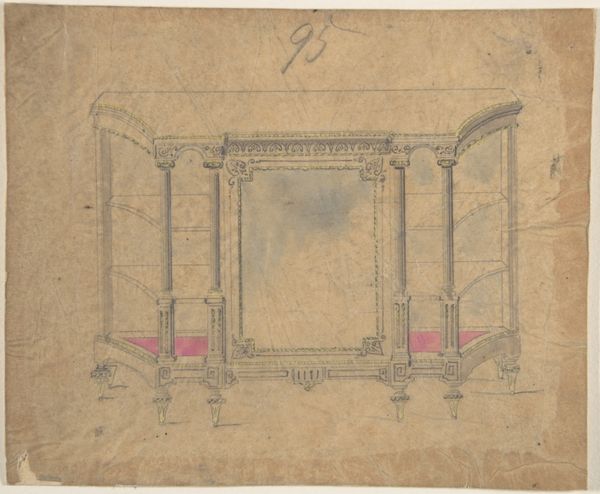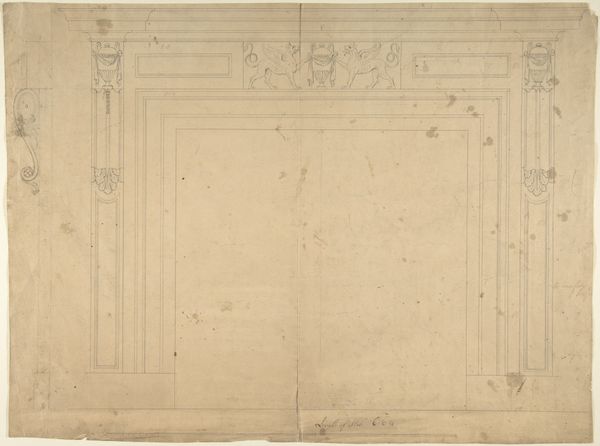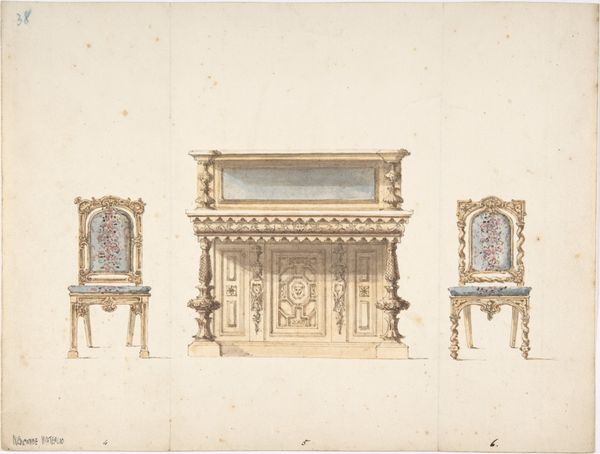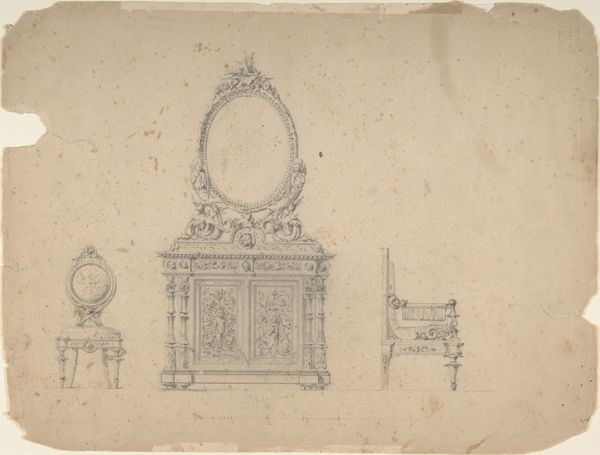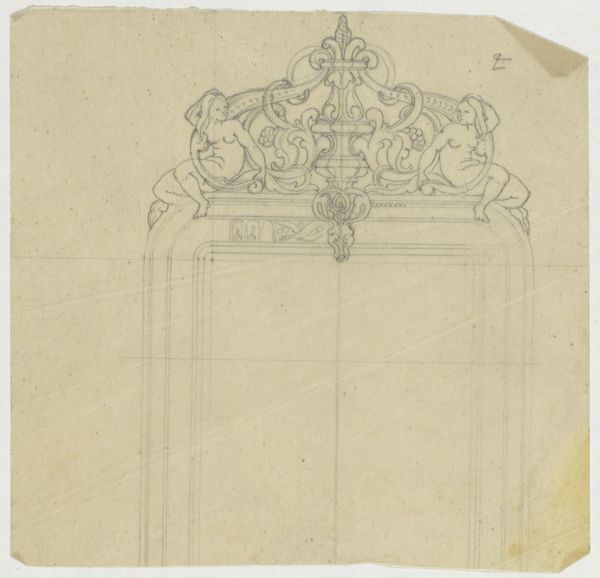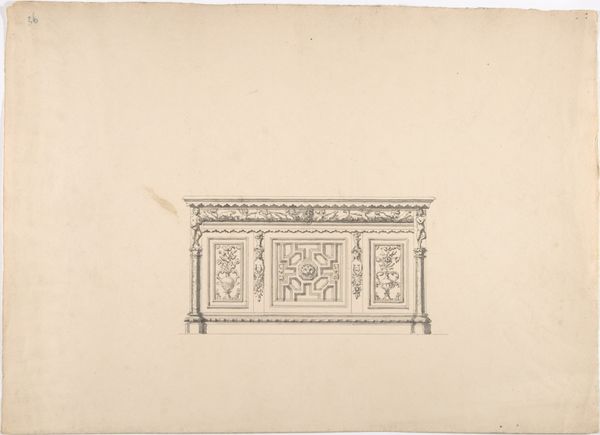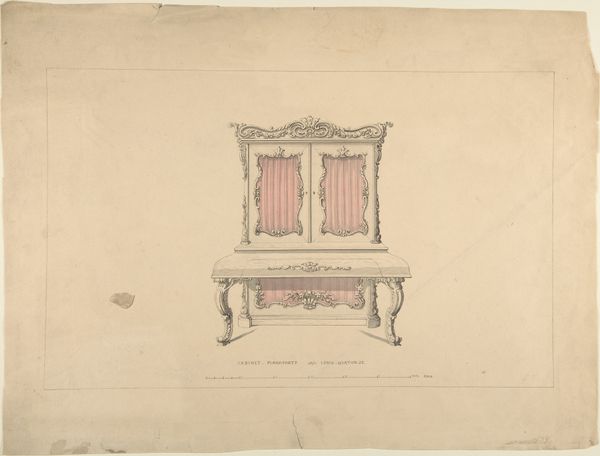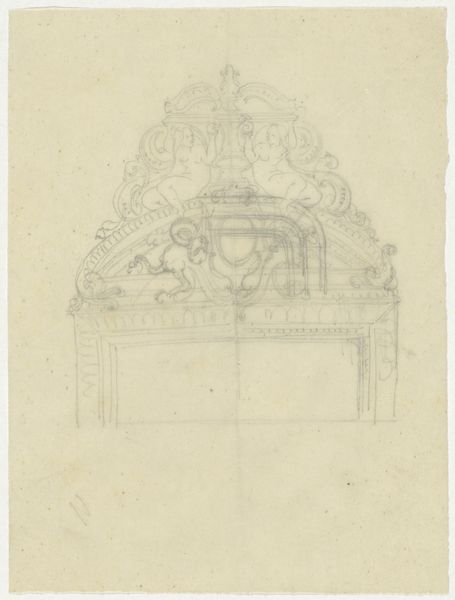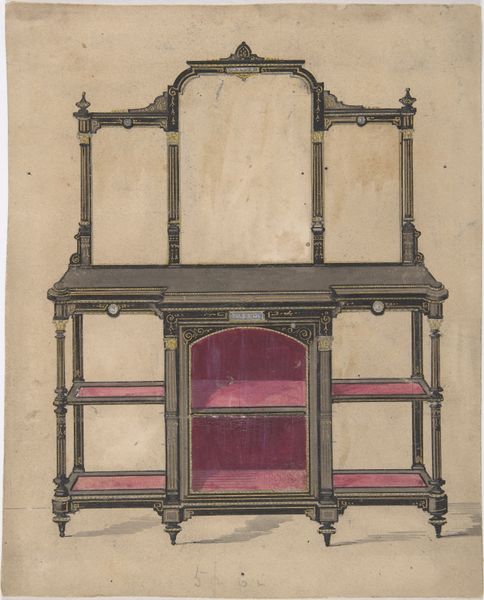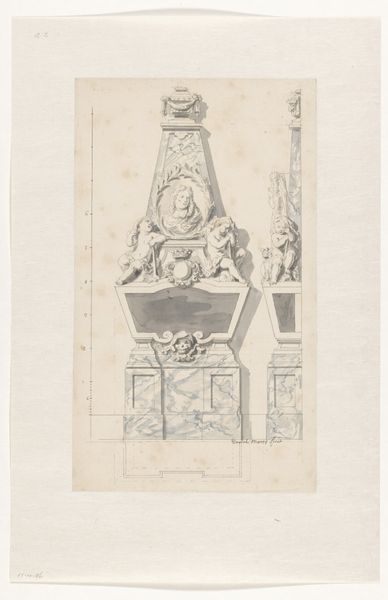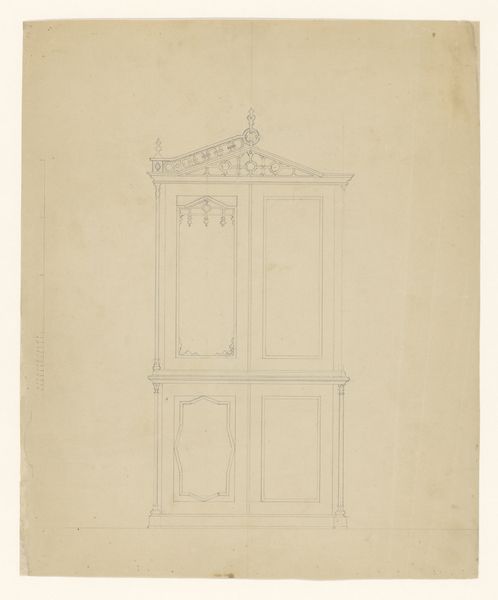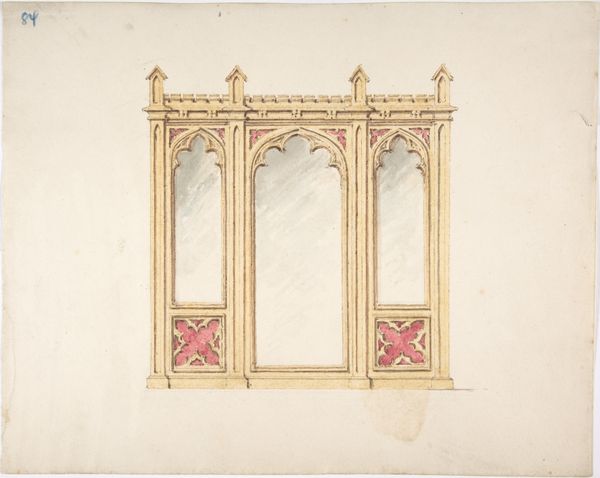
Design for Cabinet Pianoforte, François Premier Style 1835 - 1900
0:00
0:00
drawing, print, pencil
#
drawing
# print
#
geometric
#
pencil
#
history-painting
Copyright: Public Domain
Editor: So, this is "Design for Cabinet Pianoforte, François Premier Style" created sometime between 1835 and 1900, we believe by Robert William Hume. It's a drawing or a print, largely in pencil. The design is quite ornate, with strong historical references, but I wonder who it was really for? What do you see in this piece, considering its social context? Curator: It's crucial to think about what this object *represents* within 19th-century design and society. This isn't just a sketch; it's a statement. "François Premier Style," or French Renaissance Revival, enjoyed popularity precisely because it invoked the perceived glories of a historical era, often selectively and with considerable embellishment. Why look back, then? Editor: Well, from a purely aesthetic view, maybe there was interest in reclaiming beauty from that era? Curator: Possibly, but look deeper. In the 19th century, burgeoning industrialization created a nostalgic longing for what many viewed as more authentic, craft-based eras. The style signaled wealth, taste, and a perceived connection to noble lineage, real or imagined. Owning such a piano wouldn't just be about music; it was about claiming social position through historical narrative. Does knowing the history make it seem less ornate now? Editor: Definitely, knowing its "meaning" and purpose gives it a new depth. It’s not just an aesthetically-pleasing sketch. Curator: Precisely. Consider, too, the political implications of aligning oneself with French history. The mid-19th century saw both revolutions and imperial revivals. This design participates in that visual rhetoric. Editor: So, an object seemingly about domesticity, like a piano, became another kind of social statement, something quite different from pure aesthetics? Fascinating. I hadn't considered that.
Comments
No comments
Be the first to comment and join the conversation on the ultimate creative platform.
